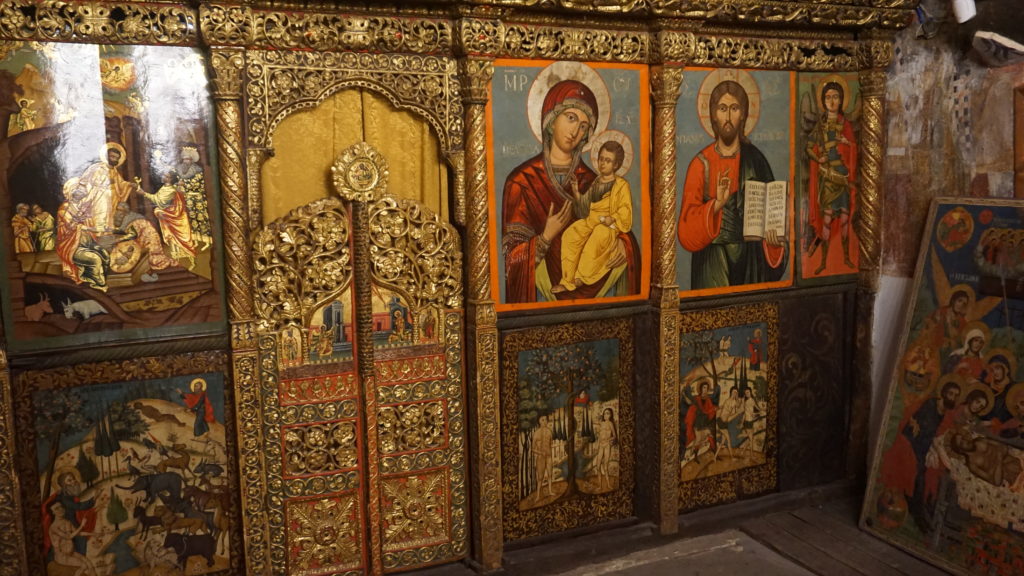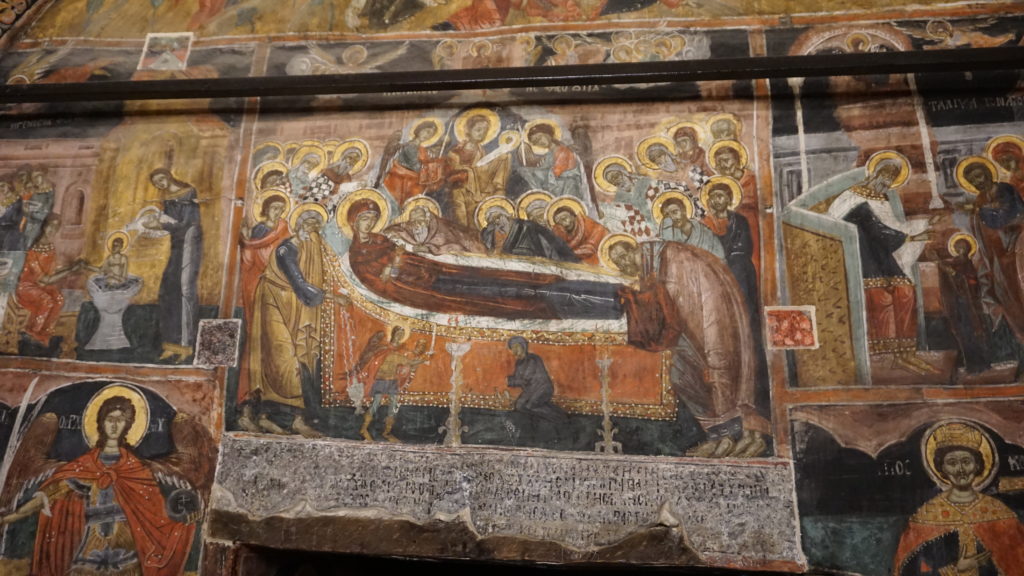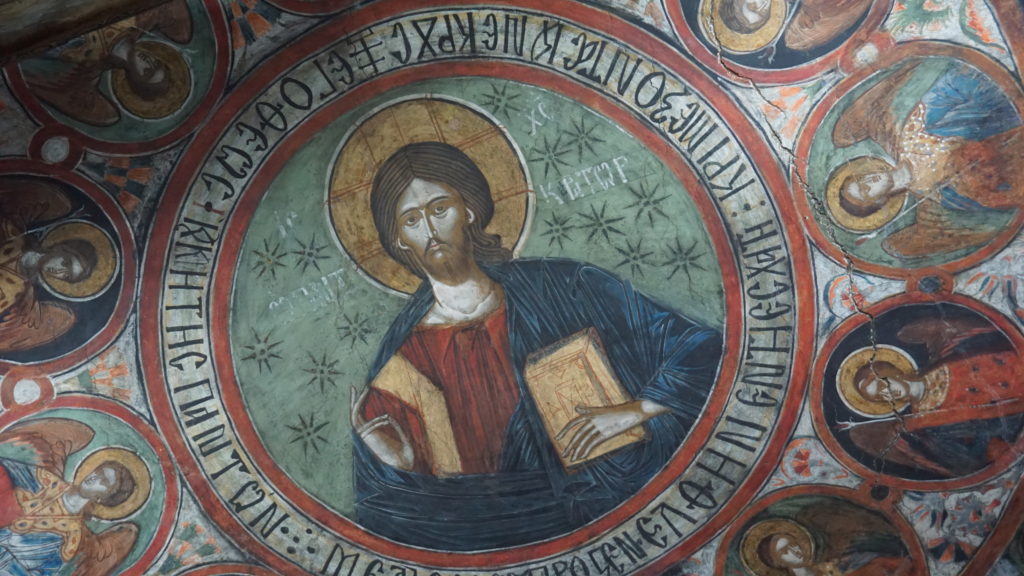
The splendid mural decoration had an exceptionally powerful influence upon the worshipers. The numerous iconographic cycles and scenes presented almost all the topics from the Old and New Testaments. Thus the walls of the church were actually a special book whose illustrations developed, in the Christian population, the notion of a lifestyle corresponding to the recommendations of the Church. The mural paintings in the church were made by leading icon-painters and their teams from the most famous workshops on the Balkan Peninsular.
They were commissioned to do the job as a result of the personal recommendations of several Tarnovo Bishops governing the eparchy during 17th century – Gabriel I, Makarios, Dionisie II, Partenios IV.


A considerable amount of the funding for the construction and icon-painting of the church were raised by the inhabitants of the village. Their noble deed was celebrated in seventeen donor inscriptions with their names – Zoto, Stoyan, Keratsa, Niko, Tano, Hristo, Dimitre. The images of the most generous among them were depicted in two donor portraits. The one of them was of the Arbanassian notable by the name of Stoyko donating resources for the icon-painting of the chapel to St. John the Forerunner. The other one bears the images of Hadji Georgi and his son – donating resources for the icon-painting of the gallery.


FOLLOW US
Contact Us
- ul. "Rozhdestvo Hristovo", 5029 Arbanasi, Bulgaria
- info@arbanasinativitychurch.com
- www.arbansinativitychurch.com

